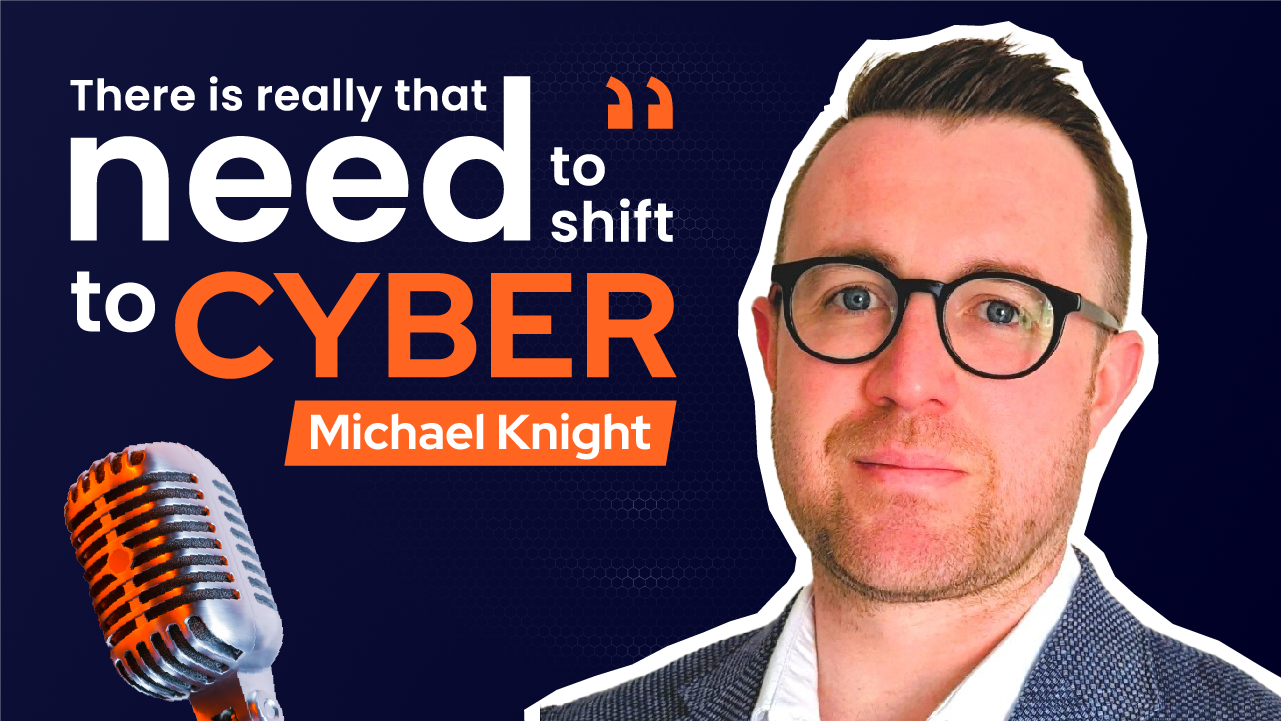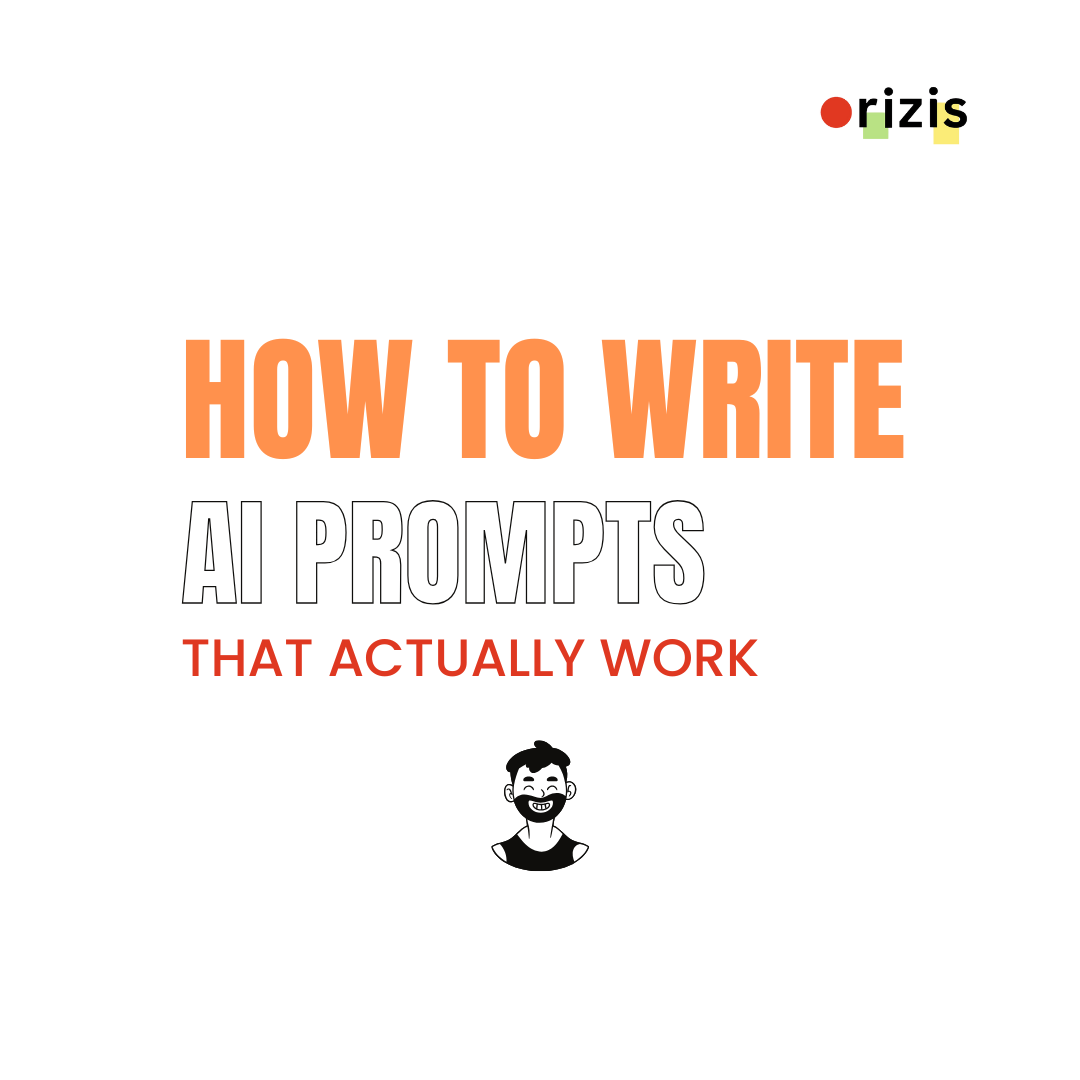As the financial landscape continues to evolve at a blistering pace, underpinned by technological advancements and new challenges to traditional financial systems, it's important to understand these changes or risk being left behind.
Manchester Digital kicks off Fintech Week 2023 by asking a selection of leading fintech and financial experts to delve into some of these shifts and highlight emerging trends that are redefining the ways that we think about money and transactions.
Featuring insights from businesses such as CTI Digital, Stripe, Zuto, GlobalLogic UK&I, Woodhurst, Barclays, TLT, Arctic Wolf and Leyton UK on topics including:
- Optimising customer experience in Fintech to drive customer acquisition
- Transparency, Explainability and Eventually Trust in AI
- The evolution of embedded finance
- Technology Trends in Banking
- Mitigating Security Risks in the Mobile Banking Era
- FCA Consumer Duty
Transparency, Explainability and Eventually Trust in AI
Kieran Malloy, Machine Learning Engineer - Zuto
Gaining public trust is key for widespread adoption of AI systems. Users need confidence in an AI's safety, fairness and integrity before relying on its outputs. Enhancing transparency and explainability of these systems helps build more trust.
A transparent AI clearly conveys details about its training data sources, development methodologies, and decision-making processes. An explainable AI elucidates the reasoning and logic behind how it generates specific outputs or recommendations. For instance, a credit risk model could outline its use of income, credit history and other factors when determining creditworthiness.
AI developers should make system transparency and explainability a top priority. Keeping humans "in the loop" to audit algorithms helps catch potential biases and mistakes. Opting for interpretable machine learning models over black boxes also improves an AI's trustworthiness.
Initiatives like the [Partnership on AI](https://partnershiponai.org/)'s Model Cards exemplify effective transparency efforts. By voluntarily publishing details on training data benchmarks, model performance, and intended use cases, Model Cards allow users to make more informed decisions about relying on an AI system. This openness fosters greater public trust.
Regularly testing for fairness, safety and unintended consequences is also crucial. Articulating a system's limitations transparently demonstrates an ethical approach.
Trust is difficult to build but easy to destroy. With concerted efforts to enhance transparency and explainability, AI practitioners can create systems worthy of user confidence. Overall, transparency initiatives help pave the path to more reliable and effective AI.
Click here to learn more about Zuto.
The evolution of embedded finance
Stripe
In some ways it’s now more affordable and manageable to run a small-scale operation than before. The proliferation of software services designed to take the pain out of undifferentiated operations means businesses can focus on what makes them special. This is best encapsulated in the rise of vertical-specific software platforms. If you want to run a local gym, there’s a software platform to help you keep track of memberships, class bookings, and more. If you want to open a restaurant, there’s a software platform to help manage table reservations, ordering, and takeaway deliveries.
Financial services have lagged behind this trend. If the gym or restaurant owner wants a loan, they have to close the laptop and re-enter a world of pen-and-paper forms, phone calls, and in-person appointments. By innovating and digitising the dissemination methods for services in the financial industry, businesses can enjoy easier access to necessary resources, consequently boosting the performance and stability of the small business ecosystem.
It’s clear this is already happening, but it’s equally clear there’s a long way to go. Stripe is the easiest and most flexible way for platforms to build and launch their own full-featured, scalable embedded finance features, such as payments, lending, cards, or bank account replacements. Stripe’s banking-as-a-service APIs, along with our robust payments solution, let businesses—from fintech startups to established platforms—embed financial services directly into their existing software. Companies like Shopify, Housecall Pro, and Lightspeed partner with Stripe to solve critical problems for their customers and create additional lines of revenue.
Click here to learn more about Stripe.
Optimising customer experience in Fintech to drive customer acquisition
Nina Mack, CX Director - CTI Digital
It’s said that while customers remember good experiences, they remember and share bad experiences. Brands are built on retention and repeat business so how do we ensure that we’re providing a great experience which is aligned to our customers’ needs, whilst also making a profit? How do we know which bits of our customer experience to change? Not every change or improvement will actually translate into more customers or better retention. Some things are an irritant but not a deal breaker, so which changes do we prioritise and invest in?
We start by gathering insight and data on behaviour and needs, directly from customers and from the people that talk to them in our businesses. Everything we need to know to make these CX decisions is waiting for us in the heads of the people we serve. We just have to ask the right questions (and ‘what would you like our product or service to do?’ is not the right question).
We need to understand what problem we solve for our customers, what they would do if they didn’t have our product or service, how they use it, what annoys them, how they think, and what else they have experienced that’s better. Once we can answer these questions with data gathered through qualitative and quantitative research methodologies, we can work out what to change and start making improvements.
We’re offering a limited number of discounted CX audits to all Manchester Digital Fintech event attendees where we’ll benchmark and assess your customer experience and produce a prioritised CX improvement programme for your business - order one today.
Click here to learn more about CTI Digital.
Steve Winfield, Senior Sales Engineer - Arctic Wolf
It’s interesting to see various posts on social media channels currently calling for everyone to use cash rather than go down the cashless payments route. (use it or lose it) It’s one of those ‘things’ we often link to covid in terms of the rapid speed of adoption of new technologies and alternative ways of doing things in our day to day lives. It's clear to see the ever increasing rapid adoption of banking apps, payment processing systems and financial technology in today's society.
Finance itself and particularly financial technology (Fintech) is changing faster than ever. Technical advancements are changing the financial landscape as a whole and I’m sure will have significant implications for the realm of cybersecurity.If we take the already familiar topic of crypto currencies or specifically the emerging focus on decentralised finance (DeFi) (which operates on blockchain technology).
This in itself opens a “whole can of worms” with respect to how we manage, monitor, own, regulate and perhaps even insure our financial assets and transactions. Decentralised finance by its very essence disrupts the norm by cutting out the middle man (intermediaries) where often legislation, regulation and security would be applied, allowing users themselves to participate in lending, borrowing and trading without the involvement of the traditional familiar institutions we know today.
Whilst the call for a more democratised model is seen, it could be argued that traditional financial and centralised institutions bring a level of security, risk mitigation and transfer and a level of assurance. For example the Financial Services Compensation Scheme doesn’t cover Peer-to-peer lending and often other ‘emergent’ disruptors – Those are companies that disrupt the existing market using innovative technology and often have much lower overheads of a traditional bank.
The increase in cryptocurrencies into our daily lives, and the increased noise around central bank digital currencies (CBDCs) I’m sure will impact significantly in the cybersecurity landscape. Ensuring the safety and security of digital wallets, transactions and the blockchain technology that underpins it will be paramount to prevent cyberattacks, theft and counterfeiting.
To summarise I think financial technology innovations will completely reshape the way we think and implement cybersecurity within the sector itself. The increased usage of DeFi Decentralised finance, Artificial intelligence, cryptocurrencies, and the change in our behaviours around our preferred payment methods (cash or contactless) all highlight the need for a robust cybersecurity strategy.
Click here to learn more about Arctic Wolf
Steve Croke, CTO - GlobalLogic
We’re seeing a perfect storm in Payments – new standards, regulatory change, and changing customer behaviours. Banks and payment providers will need to respond to these but will also need to consider the extent to which newer technologies and initiatives, such as Central Bank Digital Currencies, will change the landscape again.
Anticipating customer behaviour is key. The Image Clearing System (ICS) brought benefits to both customers and banks in 2017, but cheque usage continues to fall. Cash payments have been in decline over the last decade, and the use of digital wallets continues to increase. About a third of payments are now contactless.
ISO20022 is becoming the de-facto global standard. Compliance with this is dominating thinking, and initiatives to comply are well in train. But compliance is table stakes – it’s taking advantage of what’s now available that will differentiate Payment providers.
The Future of Payments? It’s all about data. Because of the insights it unlocks – better understanding of customer preferences, and anticipating needs, means better, more tailored propositions.
Getting to this point though is not straightforward: the established players are challenged with needing to modernise legacy application stacks. Newer entrants don’t face the same challenges, but neither are they able to draw as rich data.
And beyond this, Central Bank Digital Currencies promise a step-change. But while the potential is enormous, there are still a number of challenges to be overcome. Privacy is key here, and providers will need to convince consumers before this becomes mainstream.
Click here to learn more about GlobalLogic UK&I
Aaron Beesley, Partnership Manager - Leyton UK
The field of Financial Technology is one which is naturally rife with innovation; both at the level of the industry itself and the underlying technologies that enable developers to pursue the objectives of the software being built.
HMRC’s R&D Tax Relief scheme looks to aid such activities where the activity undertaken attempts to achieve a technological advance and resolve relevant technological uncertainties through a systematic approach. In order to understand what areas of Fintech are potentially relevant for an R&D Tax Relief claim, it’s important to understand these fundamentals and view your project or product through the lens of what you’re improving as a net result, or as the main objective, of your project.
R&D Tax Relief claims centred around Fintech should focus on the core technology stack you’re using, and what you’re having to build and create around this to facilitate your objectives – owing to a lack of capability in the public domain. For example, attempted integrations into a specific market trading solution that has a very limited API available as standard and in order to resolve this, your company builds out its own custom middleware integration hub to mitigate the issues faced at a foundational technology level.
The key thing to keep in mind is that your advance and uncertainty must be centred around technology and not the mathematics and calculations involved in your area of financial expertise (as challenging as they may be). The scheme itself allows innovative companies to claim back on salaries, sub-contractors and software licences.
Click here to learn more about Leyton UK
FCA Consumer Duty
David Gardner, Head of Fintech Tech, IP & Data Partner - TLT
The FCA’s new Consumer Duty came into force (for new products) on 31 July 2023. The FCA says that the duty will “set higher and clearer standards of consumer protection across financial services and require firms to act to deliver good outcomes for customers”.
The Fintech sector has always been subject to regulation, including general regulations like GDPR (because so many financial services transactions rely on the exchange and analysis of personal data) and specific rules like PSD2 (regulating payment transactions and access to payment account information).
However, the introduction of the Consumer Duty represents a step-change in regulation, which establishes new cross-cutting rules for regulated firms to act in good faith towards their customers, avoid causing foreseeable harm and support customers to pursue their financial objectives.
Complying with the Consumer Duty is very far from a “tick box” exercise and requires consideration at a cultural and organisational level, as firms consider if and how their products meet these objectives, and also what processes are adopted to manage product development, data collection and course correction where problems arise.
The impact of the Consumer Duty will also be felt by organisations working in Fintech who are not regulated or whose services are not directly in scope. Any party in the supply chain of a regulated firm (e.g. those involved in the production, sale or support of any in-scope product) can expect this to be a hot topic. Firms may ask for service design changes, additional contractual commitments and/or new governance and reporting requirements to enable them to demonstrate compliance.
The FCA’s objectives in introducing the Consumer Duty are laudable, but the broad scope of the changes is undoubtedly challenging for fintechs, whether large or small. If you have any queries, please get in touch with us. At TLT, our leading Financial Services sector team have been advising on the Consumer Duty since its introduction was first mooted by the FCA and our experts are on hand to help clients at every stage of their individual compliance journeys.
Click here to learn more about TLT.
Technology Trends in Banking
Darren Earnshaw, Technology Director - Barclays
There are several technology advances that enhance how people interact with their money and to help meet increasing expectations.
Banks can now do more to empower customers to be in control through self-service banking. This has evolved from the ability to check balances and transfer money, through to more advanced services such as account opening, instant lending decisioning, and e-signing on such as mortgage applications.
In today’s connected society, customers expect increasing levels of financial integration. One of the ways that this has been addressed in the UK is through Open Banking, launched in 2018. It puts customers in more control over their financial data and allows banks to connect with third party organisations to integrate their services and products. This also speeds up the time it takes to bring products to the market and encourages innovation.
Biometric technology is now widely used by smartphones, with such as Touch ID, voice recognition, and iris recognition. It provides potentially stronger security than passwords or PIN codes. Hundreds of millions of customers are now using biometrics for mobile payments; it makes customer authentication easier, but still secure. Voice recognition is also now more commonplace for authentication.
Some businesses have even adopted invisible payments. KFC in China now use ‘Smile to Pay’ facial recognition in over 300 branches. Further developments are also likely in the use of behavioural biometrics, including such as keyboard stroke rhythms.
Unfortunately, fraudsters will also continue to innovate their approach too. Many banks still use rule-based systems to detect fraud, but to be effective, it needs lots of data and you can’t rely on rules alone. That’s why financial institutions are now increasingly using machine learning algorithms to spot patterns and unusual behaviour.
What does this mean for the future of banking?
Further advanced self-serve models will mean you’re more in control of your own money, using technology to manage where your money is and how you finance your life. The use of Open Banking and APIs mean you can easily integrate your finances into other companies – such as making payments to someone through social media, as well as continuing to protect your money through biometrics, both physical and behavioural, and with enhanced cyber security using machine learning. Additionally, technology advances in such as blockchain, AI, digital currencies, and quantum computing, will continue to be explored for how they can improve customer experience or security.
Click here to learn more about Barclays.
Mitigating Security Risks in the Mobile Banking Era
Nav Parmar, Management Consultant - Woodhurst
The adoption of mobile banking among consumers has led to significant and transformative changes within the global FS industry. Especially in the post pandemic era we see a ~70% increase in mobile banking customers across the globe. Customers are getting easy access to their banking services and their banking providers. Revolut’s customers can set transaction limits and automatically round up transactions to save leftover change. Barclays enables its customers to block out certain retailers or spendings to help consumers with addictions such as gambling.
It is important to recognise that where the majority of the press on this has been positive, there are several cases where consumers have lost faith in their mobile banking providers due to concerns over security, data leakage and fraud.
Bank of Ireland’s reputation was recently tainted due to an unexpected IT failure leading to an outage across its mobile and online banking offerings, all very shortly after they were fined for data breach cases, another instance where this has happened is data breach across Experian where 24m customers data was stolen and impacted 800,000 businesses in 2020.
The common theme in both examples is the business’s lack of urgency to act on rising security and fraud related risks within their app, leading to a huge impact on their credibility in the market.
This paper summarises Woodhurst’s view on how FIs can position themselves strongly against such risks but most importantly get their businesses to a position where the chances of this happening are slim.
- Identifying what is working well within the market
Benchmarking data is crucial for a business to understand its own default position against other players in the market. Questions the FIs should be asking is what are my competitors doing to protect themselves from Fraud and Security risks that I am missing?
Woodhurst has helped Fis complete reviews to prioritise technical and operational changes to guard them from risks emerging in the mobile banking sector. These improvements must not come at the cost of keeping user privacy and data protection intact.
We have seen that while competitor analysis can provide valuable insights, your security strategy should be tailored to your unique offerings, user base, and risk profile. - Adopting technology that can help
Adopting innovative security technologies or practices before they become mainstream can set FIs apart. Keyless offers a cost effective passwordless authentication solution from just one selfie, limiting any sort of phishing or hacking possibilities as there is nothing to remember or steal. Keyless has enabled multiple banks to become PSD compliant. The enhanced security provides huge confidence within its customer base and an improved user experience overall.
Aptap’s partnership with TSB enables customers to better manage their bills and spendings, encouraging money confidence and promoting financial wellbeing within the Mobile Banking App. Sometimes the challenge isn’t not knowing that they need innovative technology, but more about how to go about doing this.
A good partnership not only allows innovation to happen at speed, but it allows the FI to focus on delivering great customer experiences that drive better retention rates. - Having the right operational teams and processes
Customers expect to receive a seamless, trustworthy and painless experience when using the mobile banking app. Customer Experience (CX) teams ensure consumers of the app can easily navigate through the different functionalities available whilst not feeling threatened or concerned about their money or personal data.
These teams can help identify any security improvements needed quickly through gaining an understanding of trends in customer queries. They can also monitor transactions for suspicious activity and work with customers to resolve any potential security breaches promptly. If customers are aware of the support, they have available, they will reach out and notify the bank quickly and vice versa so that two-way relationship is hugely important.
For example, Monzos phone lines are open 24/7 especially leading up to busy periods like Easter and Christmas, as they know customers are more likely to want quick solutions to any data breach or fraud activity around then. The impact of it happening at any time of the year is personal, but during family celebrations, this is the last thing you want.
Key takeaways
As customers embrace mobile banking apps for a secure banking experience at their fingertips, Fis must prioritise data security and maintain communication with customers to educate them on steps they can take to safeguard themselves and remain vigilant.
Every FI is different, so it is important to understand your individual circumstances and preferences and find a solution that works for you. Above all, this is what truly matters, if security is in place, we can then focus on delivering a secure, user-friendly and customer centric mobile banking experience.
Only then will you stay competitive in the evolving landscape of mobile banking.
Click here to learn more about Woodhurst.









